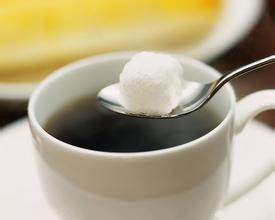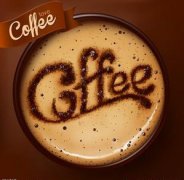College Cafe in Montmartre

I have heard that France once drank less coffee because of the shortage of coffee, and immediately saw more people napping. It sounds like a compliment, but the French love coffee is outlined. In 1991,"Gulf Peace" broke out, France was also one of the participating countries, and a small part of the foreign people worried about the war affecting the supply of daily necessities rushed to the supermarket to buy. Even the TV station was shocked. When the camera was aimed at the customers who were full of "scarce materials," they found that they took the most coffee and sugar. This became a big joke at the moment.
French coffee fine seems not to lie in taste, but environment and mood, most do not want to close the door "drink alone," just in the appearance of the desert, even if the value of a small cup surplus at home to cook a pot. They did not drink it in haste, but gradually tasted it carefully, read books and newspapers, and talked loudly. A "bubble" lasted for a long time. At the science and technology exhibition, I walked through six or seven large exhibition halls, all of which had coffee seats in the corners to facilitate exchanges and negotiations between people from all walks of life. All day long, there were full seats.
Second, the French develop this habit of drinking coffee, blindly unconsciously expressing an elegant charm, a romantic sentiment, a sense of enjoyment of life. Or maybe it's an old-fashioned fantasy coffee culture. For this reason, France let people rest and drink coffee places can be said to be wide alleys, under the trees, roadside, square side, river bank, as well as cruise ships, street balcony, resulting in the Eiffel Tower. And the pattern, style, size eclectic, there are cafes, restaurants, halls, rooms, which belong to the building and exist, there are roofs covered. And the most popular, full of romantic atmosphere, as usual those outdoor cafes, that is almost a portrayal of French life.
Many cafés occupy public places, such as the square enclosed in a corner, the street occupied a sidewalk, even in the crowded Champs Chérisses, the colorful parasols became a strange street scene in Paris, and it seems that the municipal government has made a special effort to do this. The chairs of the coffee seats are almost all arranged towards the road, which is obviously a deliberately configured auditorium, and the split road is the big stage where the repertoire never repeats. Look at those informal guests, listen to the noise in the street, slap their shoulders, have a cup in hand under the parasol, and relax. Take a copy of the local newspaper without guidelines can also be read, smoking cigarettes can also be smoked, but also on the main lane of purple Yanhong carefully observed Here, there will be bright fashion flash, there will be intoxicating fragrance floating, there will also be Jiona colorful girl passed, but also often stranger musicians to send you a beautiful melody. This scene is drowning. It is not difficult to see lovers who whisper on the seat hugging and kissing superciliously, which others really can't envy, because this is France. Assuming your fate is limited, perhaps in the chair beside you, sitting on a French MM, let you add a lot of visual enjoyment. Here, Parisian girls sipping coffee and reading fashion magazines are regarded as beautiful.
Third, in addition to those open-air cafes that look up to the sky, there are about 170,000 cafes in France, and there is no lack of grandeur or simplicity. Quite in Paris, some of the cafes themselves are historical attractions. During the Old Dynasty, the centre of cultural life in France was at court. During the Enlightenment of the 18th century, the cultural center of gravity began to shift to salons, clubs and cafes. For example, the Cafe Le Procope in the Latin Quarter was associated with the French Revolution, which affected the whole world more than two hundred years ago. Voltaire, the flowing thinker of European enlightenment in the 18th century
Rousseau, Diderot, Robespierre, Danton and Marat, the three great reactionaries, were all frequent visitors. Voltaire's books, Diderot's first encyclopedia of the world, etc. were written here, and the red, white and blue tricolour hat with significant implications during the Great Revolution also appeared here for the first time. In the years leading up to the outbreak of reaction, it had always been a place where emotions were surging and storms were brewing. It is said that Napoleon came here before he started, and left his military hat because of his coffee debt. Later, it was a social occasion for first-class writers, actors, gentlemen and ladies to gather and talk, among them Hugo, Balzac, George Sang, Zola, etc., and even later established a literary journal under the name of this cafe. therefore, the museum is rich in traditional clothes, antique installations and various cultural relics. the museum's styles and scenery seem not to have changed because of the change of time. customers are still in love with its classics.
The Collegiate Cafe in Montmartre is a symbol of the 19th century Paris university era. Artists from all over the world have been living here for a long time, and they have built a brilliant Paris University together with cafes as the periphery. Opposite St. Germain, there is a 19th-century Les Deux Magots cafe, but its fame dates back to the 1920s. A group of surrealist writers and painters continued to argue here, igniting the flames of artistic thinking, resulting in the creation of a "de Mager Prize for Literature" named after this cafe, which continued until the next day. It is said that Hemingway used to come here for coffee to capture creative inspiration. However, a cup of coffee, which sells for four or six francs elsewhere, can fetch twenty-two francs here, and this literary and artistic creation has a real price. Interestingly, the cafe De Flore next door was also a famous academic garden, which flourished after the war with the help of more philosophers. At that time, Sartre, Simon Bova and others used to sit in still seats. Now there is a bronze medal marked in passing. Because there are always cultural elites coming and going at the threshold of these two cafes, this area gradually becomes full of bookstores, literary cafes and restaurants, and later becomes the birthplace of French American literature (Belle-Lette).
Important Notice :
前街咖啡 FrontStreet Coffee has moved to new addredd:
FrontStreet Coffee Address: 315,Donghua East Road,GuangZhou
Tel:020 38364473
- Prev

Vietnamese coffee culture Vietnamese coffee is also nameless in the world.
I didn't know until I arrived in Vietnam that Brazil is the kingdom of coffee, but Vietnam's coffee is also nameless in the world. The Vietnamese love coffee, just as the Chinese love tea, it is a kind of deep bone marrow, brought from the blood of love and concentration, may be that cup of coffee, gradually baked out of the Vietnamese public gentle and easygoing impatience. Pure Vietnamese coffee is drip coffee, with a dedicated drip coffee pot.
- Next

The Development Prospect of Chinese Coffee Culture
According to the newly published sixth batch of sought-after occupations list, baristas are among the most sought-after occupations and are rated by many experts as fashion occupations with low entry barriers and good blueprints. According to reports from CCTV-2, China Talent Network and Sohu, there is a shortfall of 30, 000 baristas a year across the country. Chengdu now has about 700 coffee shops, large and small, and needs at least 3000 coffee workers a year.
Related
- Detailed explanation of Jadeite planting Land in Panamanian Jadeite Manor introduction to the grading system of Jadeite competitive bidding, Red bid, Green bid and Rose Summer
- Story of Coffee planting in Brenka region of Costa Rica Stonehenge Manor anaerobic heavy honey treatment of flavor mouth
- What's on the barrel of Blue Mountain Coffee beans?
- Can American coffee also pull flowers? How to use hot American style to pull out a good-looking pattern?
- Can you make a cold extract with coffee beans? What is the right proportion for cold-extracted coffee formula?
- Indonesian PWN Gold Mandrine Coffee Origin Features Flavor How to Chong? Mandolin coffee is American.
- A brief introduction to the flavor characteristics of Brazilian yellow bourbon coffee beans
- What is the effect of different water quality on the flavor of cold-extracted coffee? What kind of water is best for brewing coffee?
- Why do you think of Rose Summer whenever you mention Panamanian coffee?
- Introduction to the characteristics of authentic blue mountain coffee bean producing areas? What is the CIB Coffee Authority in Jamaica?

